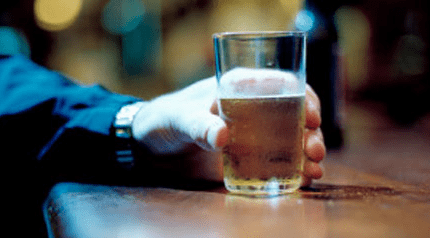Have you ever wondered why you crave for a drink from time to time or why you can drink alcohol in the first place, for that matter? Our ability to ingest and metabolize ethanol can be traced back to a common primate ancestor who lived some 10 million years ago, according to US researchers who sequenced key proteins from 19 modern primates and monkeys, then used this information for a track back an evolutionary history. The findings help explain why alcohol consumption exists in the first place, and – maybe more importantly – it shines new light on how primate evolution was shaped by it. Darn right, alcohol is important!
Cheers!

Humans, like all primates, use the alcohol dehydrogenase enzyme ADH4 to metabolize alcohol. Yet, not all can metabolize alcohol just as well. Lemurs and baboons, for instance, have a less effective version of ADH4, which raises the question: when did humans actually evolve this highly active version of the enzyme? Some researchers believe it all started some 9,000 years ago when humans first began fermenting food, according to archaeological evidence. This estimate (more like a guess) is way off, however.
[MORE] Men drink more alcohol because of contagious smiles
Matthew Carrigan, a biologist at Santa Fe College in Gainesville, Florida, along with colleagues, sequenced ADH4 proteins from 19 modern primates then went backwards to determine the exact sequence of the protein in various stages of primate evolution. The team made copies of these ancient proteins and found the earliest version of ADH4 dated as far back as 50 million years ago. During this time, however, ADH4 was only able to metabolize minute amounts of alcohol. Some 10 million years later, though, ADH4 could metabolize 40 times more ethanol. So, what happened in the meantime?
“Around this same time, the Earth cooled off, food sources changed, and this primate ancestor started to explore life on the ground,” Carrigan says.

Our early ancestors lived mostly in the trees. Once they began to live on the ground as well, they naturally ingested food fallen from the trees as well. Unlike the fruits hung up in trees, the fallen kind is exposed to bacterial degradation, which converts sugars into alcohol.
“If you were the ancestor without this new mutation in ADH4, the ethanol would quickly build up in your blood and you’d get inebriated much faster,” Carrigan says. “You’d be a cheap date.”
Only a couple of fallen fruits would be enough to get a primate ancestors ‘drunk as a monkey’. Instead of being metabolized, most of the alcohol from the fermented fruits would wind up directly in the blood stream, intoxicating the animal and making it an easy prey. Those primates that bore mutations that allowed them to metabolize more alcohol could eat more fruits without exposing themselves to any additional danger. Because they had more resources at their disposal, these primates were more likely to survive hence they the genes were selected and passed down to the human lineage we know today.
[DON’T TRY THIS AT HOME] What happens to your brain when you mix pot and alcohol
This hypothesis also serves to explain why there’s a pleasure pathway in the brain associated with alcohol consumption. Like most things that happen to our bodies or our feelings and sensations, there’s a reason (often evolutionary) why these exist.
“It’s not a whole lot different from the addictions some people have towards food,” Carrigan explains. “At the right dose, when you didn’t have alcohol and candy at every corner, it was hard to get too much of this sort of stuff, so when you found it, you wanted to be programmed to overconsume.”
Overall, this was a fine study (PLOS ONE). Here’s to you! *glass on glass


